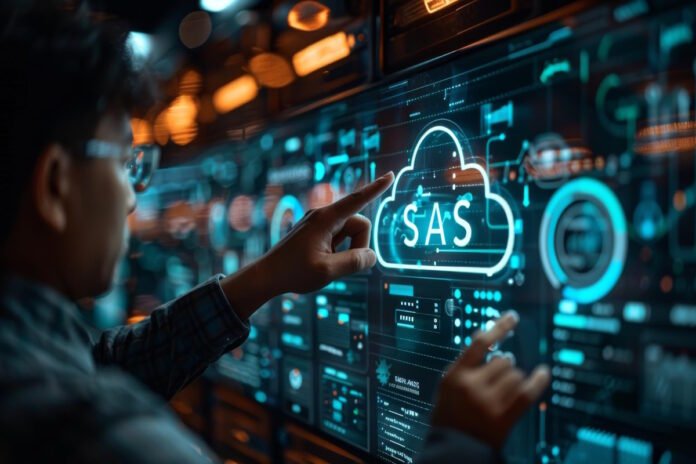In today’s digital age, protecting your cloud-based applications is more crucial than ever. For small and medium-sized enterprises (SMEs), IT managers, cloud service subscribers, and tech enthusiasts, understanding SaaS security is key to safeguarding valuable data and ensuring seamless operations. This blog post dives into the importance of SaaS security, explores common threats, and offers practical tips to fortify your cloud-based applications against potential risks.
The Importance of SaaS Security
With the increasing reliance on cloud-based solutions, the security of Software as a Service (SaaS) applications has become a top priority. Businesses are moving their operations online, leveraging the power of SaaS to streamline processes and enhance collaboration. However, this shift also brings new security challenges that need to be addressed.
SaaS security is essential for protecting sensitive data, maintaining customer trust, and ensuring business continuity. Data breaches can lead to financial losses, legal repercussions, and reputational damage. For SMEs, a single security incident can be devastating. By prioritizing SaaS security, businesses can mitigate risks and stay ahead of potential threats.
Understanding the importance of SaaS security is the first step towards creating a robust defense strategy. This involves recognizing the various threats that cloud-based applications face and implementing best practices to counter them.
Understanding the Risks: Common Threats to Cloud-Based Applications
To effectively protect your SaaS applications, it’s crucial to understand the common threats they face. Cybercriminals are constantly devising new tactics to exploit vulnerabilities in cloud-based systems. Here are some prevalent risks to be aware of:
- Phishing Attacks: Cybercriminals use deceptive emails and websites to trick users into revealing sensitive information, such as login credentials and financial details.
- Malware and Ransomware: Malicious software can infiltrate your systems, compromising data integrity and availability. Ransomware, in particular, can lock you out of your data until a ransom is paid.
- Insider Threats: Employees or contractors with access to sensitive information can unintentionally or maliciously compromise data security.
Understanding these threats is essential for developing effective security measures. By staying informed about the latest attack vectors, you can proactively defend your SaaS applications and protect your business.
Best Practices for SaaS Security
Implementing best practices for SaaS security is critical to safeguarding your cloud-based applications. Here are some key strategies to consider:
- Password Policies: Enforce strong password policies that require users to create complex passwords and change them regularly. Use multi-factor authentication (MFA) to add an extra layer of security.
- Encryption: Encrypt sensitive data both in transit and at rest to prevent unauthorized access. Use advanced encryption standards (AES) to ensure data protection.
- Access Controls: Implement role-based access controls (RBAC) to limit user access to only the information and resources they need. Regularly review and update access permissions.
By adopting these best practices, you can significantly enhance the security of your SaaS applications. Remember that security is an ongoing process, and continuous monitoring and improvement are essential.
The Role of Multi-Factor Authentication in Enhancing SaaS Security
Multi-factor authentication (MFA) is a powerful tool for enhancing SaaS security. It requires users to provide two or more forms of identification before accessing an application. This additional layer of security can help prevent unauthorized access, even if login credentials are compromised.
MFA can take various forms, such as:
- SMS or Email Verification: Users receive a one-time code via SMS or email, which they must enter alongside their password.
- Authentication Apps: Apps like Google Authenticator generate time-based codes that users must enter during login.
- Biometric Verification: Fingerprint or facial recognition adds a highly secure layer of authentication.
Implementing MFA can drastically reduce the risk of unauthorized access and data breaches. It’s a simple yet effective measure that every business should consider for their SaaS applications.
Importance of Regular Software Updates and Patch Management
Regular software updates and patch management are vital components of SaaS security. SaaS developers frequently release updates to address vulnerabilities and improve functionality. Failing to apply these updates can leave your applications exposed to security risks.
Here are some steps to ensure effective patch management:
- Automate Updates: Enable automatic updates for your SaaS applications to ensure you always have the latest security patches.
- Regular Audits: Conduct periodic audits to identify and address any outdated software or unpatched vulnerabilities.
- Vendor Communication: Maintain open communication with your software vendors to stay informed about updates and security advisories.
By keeping your software up-to-date, you can protect your SaaS applications from known vulnerabilities and reduce the risk of cyberattacks.
How to Choose Secure SaaS Providers
Choosing secure SaaS providers is crucial for maintaining the integrity of your cloud-based applications. When evaluating potential providers, consider the following criteria:
- Security Certifications: Look for providers with recognized security certifications, such as ISO 27001 or SOC 2. These certifications indicate a commitment to stringent security practices.
- Data Encryption: Ensure that the provider encrypts data both in transit and at rest using advanced encryption standards.
- Compliance: Verify that the provider complies with relevant industry regulations, such as GDPR or HIPAA, to ensure data protection and legal compliance.
By selecting reputable and secure SaaS providers, you can have confidence in the security of your applications and data.
Balancing Security with Usability
While security is paramount, it’s essential to balance it with usability. Ensuring that your SaaS applications are user-friendly can enhance productivity and user satisfaction. Here are some tips for achieving this balance:
- User Training: Educate users on security best practices and the importance of following security protocols. Regular training sessions can help reinforce good habits.
- Simple Authentication: Implement simple and convenient authentication methods, such as single sign-on (SSO), to streamline the login process without compromising security.
- User Feedback: Gather feedback from users to identify any usability issues and make necessary adjustments to improve the overall experience.
By prioritizing both security and usability, you can create a secure and productive environment for your users.
The Future of SaaS Security
The landscape of SaaS security is continually evolving, with new trends and technologies emerging. Staying informed about these developments can help you stay ahead of potential threats. Here are some future trends to watch:
- AI and Machine Learning: AI-powered security solutions can detect and respond to threats in real-time, providing advanced protection for SaaS applications.
- Zero Trust Architecture: This approach assumes that no one, whether inside or outside the network, can be trusted by default. It requires continuous verification and strict access controls.
- Blockchain Technology: Blockchain can enhance data security and integrity by providing a decentralized and tamper-proof ledger.
By keeping an eye on these trends, you can proactively adapt your security strategies and ensure the continued protection of your SaaS applications.
Conclusion
In conclusion, SaaS security is a critical aspect of protecting your cloud-based applications and ensuring the success of your business. By understanding common threats, implementing best practices, and staying informed about emerging trends, you can create a robust security framework. Remember, security is an ongoing process that requires continuous monitoring and improvement. Take proactive steps today to safeguard your SaaS applications and protect your valuable data.
















